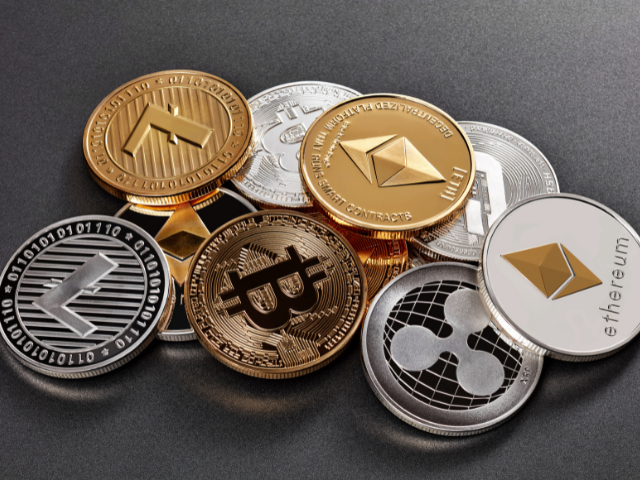What is Cardano? It is one of the many cryptocurrencies you can buy. And it is a new cryptocurrency platform that was launched in September 2017 after two years of development.
Cardano is different than other cryptocurrencies projects simply because it is built on peer-reviewed papers. After all, they want to get things right from the get-go. They also want to develop the best possible blockchain.
Nonetheless, Cardano is the third generation decentralized proof-of-stake (PoS) blockchain after Bitcoin and Ethereum. The infrastructure strain of energy use, growing expenses, and slow transaction times limit interoperability, scalability, and sustainability on PoW networks similar to Ethereum. Therefore, Cardano attempts to solve these problems the first two cryptocurrencies face.
Cardano is the blockchain, and ADA is the cryptocurrency that fuels the blockchain. If someone told you they have invested in Cardano, it means they have invested in ADA coins. The Cardano platform uses the Ouroboros consensus protocol, and it is designed to be a more practical choice for proof-of-work (PoW) networks.
Cardano’s Ouroboros protocol was the first PoS system proven to be secure and the first to be informed by scholarly academic study.


About Cardano & Its Background
Cardano is founded by the same co-founder who founded Ethereum back in the day. That man’s name is Charles Hoskinson. He actually left the Ethereum project in 2014 after a dispute with Vitalik Buterin.
Hoskinson wanted to take venture financing and turn it into a for-profit company, while Buterin wanted to preserve it as a charity. Afterward, he would start the Cardano project.
There are many similarities between Cardano and Ethereum because they share the same founder. But Cardano is trying to improve everything that Ethereum has done before. Over the years, the Cardano team has partnered with various Universities all over America for research reasons.
Cardano has placed ADA as an alternative to Ethereum. Also, both Ada & ETH are used for similar applications, such as smart contracts, and aim to build a connected and decentralized system. Nonetheless, Cardano considers itself a modernized version of Ethereum, and the blockchain platform also aim to provide banking services to the world’s unbanked.
Cardano’s fundamental applications are in anointed and identity control. The previous application can streamline and simplify processes that require the gathering of data from various sources. The recent application can trace and review a product’s manufacturing processes from origin to finished goods and, conceivably, suspend the market for counterfeit products.
Cardano Development Phases
Cardano is being developed in 5 phases toward developing the network into a decentralized application (DApp) development platform with a multi-asset ledger and verifiable smart contracts. Each of the 5 phases is named after an important historical figure and is referred to as an era. The 5 phases are:
- The Foundation Phase: And it is called the Byron era.
- The Decentralization Phase: It is called the Shelley era.
- The Smart Contracts Phase: It is called the Goguen era.
- The Scaling Phase: It is called the Basho era.
- The Governance Phase: It is called the Voltaire era.
How Ouroboros Works
On a general level, Ouroboros distributes physical time into epochs made up of slots, which are fixed periods. Slots are comparable to working shifts at a facility. An epoch remains 5 days, and a slot remains only 1 second. But these numbers are changed after an updated proposal, and they are configurable.
Furthermore, epochs work in circles and mean when one epoch ends, a new one starts directly. Moreover, each slot has a slot head taken by a “lottery” system. In this lottery system, the greater the stake, the larger the odds of winning the lottery. Slot leaders are accountable for 3 tasks:
- Validating transactions
- Building transaction blocks
- Adding newly-produced blocks to the Cardano blockchain
Ouroboros needs a tiny number of ADA owners to be online and has reliable network connectivity. To further reduce energy expenditure, the algorithm includes the notion of stake pools. ADA owners can arrange themselves into stake pools and choose a few to represent the pool throughout protocol execution, making it simple to join and securing block creation even if some are offline.


Cardano Requirements
The core of any blockchain platform is the algorithm it utilizes to build blocks and verify transactions. Cardano uses Ouroboros, and it is an algorithm that uses PoS protocol to mine blocks.
The PoS protocol is intended to reduce energy consumptions throughout the block production process to a most limited. The protocol works by eradicating the need for leftovers power or extensive computing resources, fundamental to the functioning of Bitcoin’s proof-of-work (PoW) algorithm.
In Cardano’s PoS protocol system, staking defines a node’s capability to produce blocks. A node’s stake matches the quantity of ADA held by it over the long term.
Cardano Price Prediction
Digital currencies continue to reshape our world globally. It’s difficult for anyone going against them these days. That is why people need experts in the field updating them on how the community works. Just like any other cryptocurrency out there, financial analysts keep predicting the prices of Cardano in the market.
Experts often offer their expertise and thoughts on the matter. They enable people to make well-informed judgments on when to buy, sell, or hold investments in the ADAs. They even compare their prices against fiat currencies, such as the United States Dollar (ADA to USD).
Even the founder of the cryptocurrency himself sometimes offers predictions considering his coins. Back in July of 2017, Charles Hoskinson became the focus of a storm of criticism on Twitter because of a prediction he made that says; that Cardano blockchain would be the home of “hundreds of assets running on Cardano, thousands of DApps, tons of interesting projects and lots of unique use and utility.” And that, unfortunately for him, was not the case.
However, Cardano has a bright future ahead, and we believe it will compete with the price of other cryptocurrencies such as Ethereum, Binance Coin, Bitcoin Cash, etc. So we predict that Cardano is a long-term investment, and anyone who wants a good return on investment must be ready to forget their investment in ADA for the next 5-10 years.
Aspects Of Cardano
There is no white paper for Cardano. Instead, it employs design principles to address challenges like scalability, interoperability, and regulatory compliance that plague existing cryptocurrencies.
Both Ethereum and Bitcoin use what is called the “Proof of Work” model. So what is the Cardano model? Well, Cardano operates on a model called “Proof of Stake,” which basically means: the more Cardano that you hold, the more of a chance that you have to mine Cardano, and the actual currency itself, in other words, “Proof of Stake” means that you have a stake in what is going on in the Cardano world.
Look at it from this perspective; proof of work is like working for someone else. You get your wage at the end of the day, but you don’t really care about the business. Proof of stake, on the other hand, is entirely different. You have invested interests in the company now, you are a stakeholder, and you care about the project’s success. This aspect brings people closer.


Bitcoin vs. Ethereum vs. Cardano
After answering the question, what is Cardano? Let’s discuss some differences between ADA, BTC, and ETH.
Firstly, when it comes to Supply:
- ADA, the coin of Cardano, has a maximum supply of tokens, which is 45 Billion ADAs that can ever be created. As of right now, there are 31.9 billion tokens in circulation.
- BTC, the coin of Bitcoin, has a maximum supply of 21.5 Million BTCs that can ever be created, with currently 18.9 Million in circulations.
- Ethereum has no max supplies. It can forever be created, which might be solved with Ethereum 2.0 in a few years. There are about 115 Million ETHs in circulation.
Secondly, we have Speed:
- BTC has roughly 4-4.5 transactions per second.
- ETH has 20 transactions per second.
- ADA has 6.5 transactions per second (for now). It is estimated to reach up to a Million transactions per second, but that scale has not been achieved just yet.
Finally, another one of the differences between Bitcoin, Ethereum, and Cardano is that Cardano is seeking to be the Internet of Blockchain in the future. What does Cardano want to do? Actually, Cardano intends to connect all cryptocurrencies together, letting us move assets from one cryptocurrency to another with ease.
Examples Using Cardano
The parties behind ADA (Cardano) have issued 3 products: Atala PRISM, Atala SCAN, and Atala Trace. The first product is exchanged as an identity management tool that can grant access to services. For example, it can verify credentials to open a bank account or eligibility for government aid. The other 2 products are being utilized to track a product’s journey through a supply chain.
Cardano is further developing an innovative contract platform that will present a solid and protected platform for developing enterprise-level DApps. Soon, the team at Cardano intends to practice a democratic on-chain governance system named Project Catalyst to oversee the development and performance of projects. They will also revise their treasury management system to support future costs using Project Catalyst.
What Is Cardano Facing Today?
With solid fundamentals and a lot of momentum behind it, Cardano is without a question one of the most exciting applications in the blockchain industry today.
However, It is actually encountering some problems; for example, the rising competition from previous cryptocurrencies and the ones coming up, like Polkadot who has a considerably larger development staff and is expanding at a far faster rate.
Another problem is its low fees; I mean, offering people your coins at a low price is a good thing, but it also means that its demand space on the network is also low. Now, moving to the smart contract market where Cardano actually stands no chance at defeating Ethereum smart contract share until they launch.
Speaking of growth rate, Cardano is moving pretty slow in comparison to other blockchains that appeared around the same time of its appearance, and the reason behind this is that it is taking its time building a solid base which is a good thing in the long run, just not right now.
Mining Concerns
A stake pool is a secure server node allocated to running the protocol 24/7 for the contributing ADA owners. Stake pools contain the mixed stake of various stakeholders in an individual entity and are accountable for processing transactions and creating new blocks.
In the PoW system, the financial incentives for miners to join the network and build blocks are awards of the cryptocurrency and transaction fees. Ouroboros accumulates rewards from an epoch and divides them amongst stake pools and stakeholders. Each is compensated based on the proportion of their stake offered during the epoch, indicating a higher stake will receive larger rewards.
Investing in stocks, cryptocurrencies, and other Initial Coin Offerings (“ICOs”) is highly risky and speculative. This article is not a recommendation by iCryptoApe or the writer to invest in stocks, cryptocurrencies, or other ICOs. Because each person or individual’s circumstances are unique, therefore, a qualified professional and/or a financial advisor should always be consulted before making any financial decisions and/or trading or buying stocks, cryptocurrencies, or other ICOs. iCryptoApe makes no representations or guarantees as to the accuracy or timeliness of the information included within.




